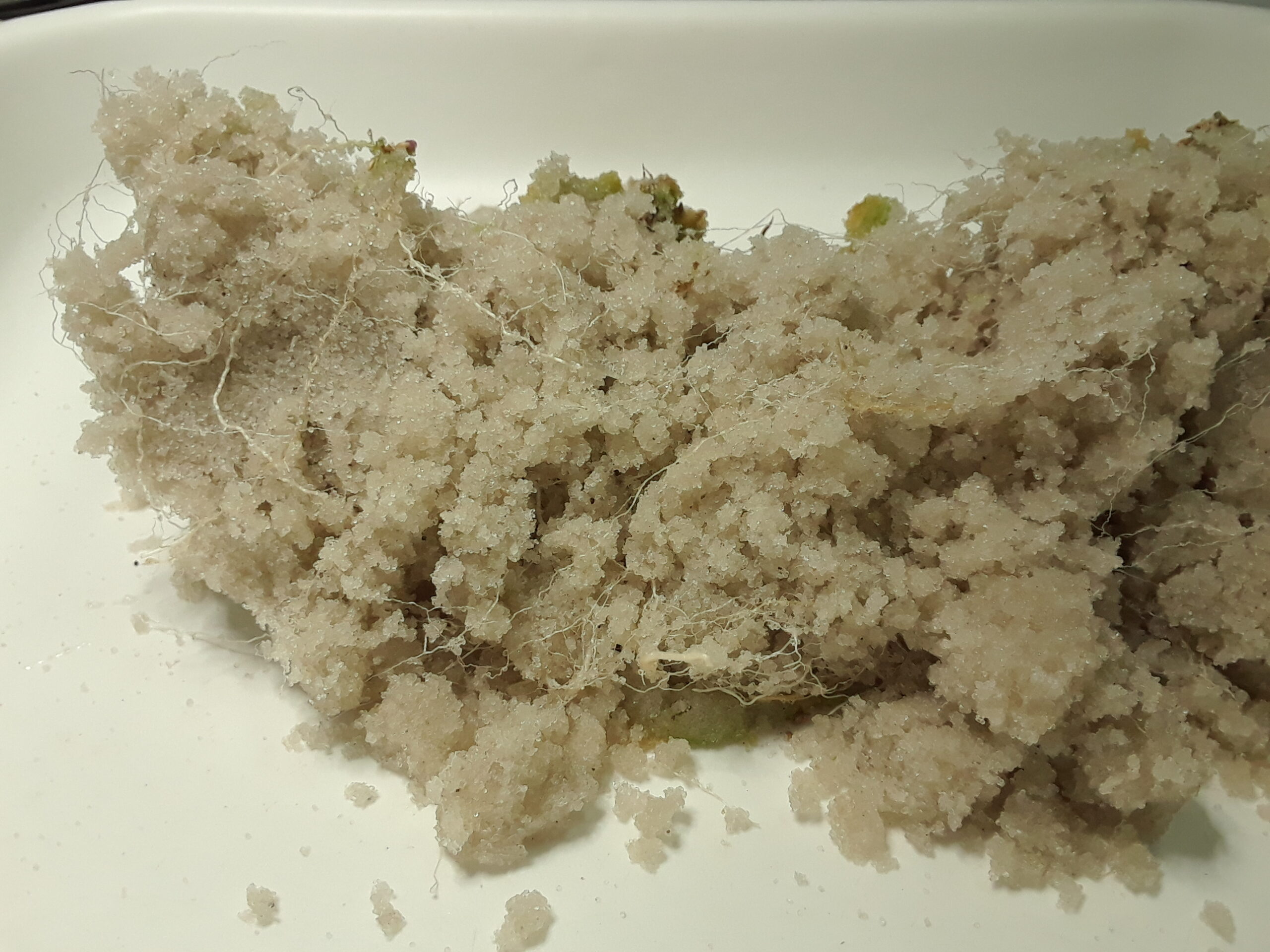June 01, 2022
Roots and Fungal Hyphae Impact Soil Water Availability
Switchgrass roots and symbiotic fungi change soil hydraulic properties.

Switchgrass roots entangled in sandy soil. Root structures and exploration through soil pores changes soil hydraulic properties by blocking pores that can reduce the rate of water flow through soil.
[Courtesy University of Tennessee—Knoxville.]
The Science
The presence of roots, or fungal hyphal structures, in the soil can alter key soil hydraulic parameters, such as the relationship between water content and water potential (the soil water retention curve). Roots can reduce the maximum rate of water movement through the soil, likely by clogging larger soil pores. Roots and fungal hyphae can also increase the amount of water stored in the soil and change the size distribution of pores in the soil.
The Impact
The soil water retention curve is a key component of plant and soil hydrological modeling from the ecosystem to global scales. The use of retention curve parameters derived from root free soil (e.g., repacking root free soil for measurements in the lab) will not correctly represent actual soil water movement water retention or water release dynamics in situ.
Summary
Soil hydraulic properties describe the storage and movement of water in the soil under changing conditions, such as wetting or drying. Knowledge of these properties is critical to accurate hydrological modeling. The soil water retention curve describes how water content changes as the soil dries. The shape of the curve varies based on soil type and reflects the rate and amount of water availability. The curves are often estimated based on laboratory data or generic functions that depend on soil physical properties, but they do not consider potential impacts of soil roots or fungal hyphae. This research reviewed current knowledge of how these soil biotic components affect hydraulic properties. Laboratory experiments were conducted to test if the presence of roots and fungi had an effect on the hydraulic properties of two soils with different amounts of sand or clay. Switchgrass seeds were planted in pots and grown in a greenhouse. Some pots also had the beneficial root fungus added.
After several months hydrological measurements of the soils were collected, and the results were applied to a commonly used soil water retention curve function. In sand, the roots reduced the maximum rate of water flow through the soil. This reduction was likely due to roots clogging soil pores. Results also indicated the presence of roots changed the shape of the water retention curve by increasing water content at saturation expanding the distribution of soil pores sizes. The presence of mycorrhizal fungi added to the root effects. The results indicated that the impact of root and fungal structures on models of soil hydraulic properties must be considered.
Principal Investigator
Jeffrey Warren
Oak Ridge National Laboratory
[email protected]
Program Manager
Brian Benscoter
U.S. Department of Energy, Biological and Environmental Research (SC-33)
Environmental System Science
[email protected]
Daniel Stover
U.S. Department of Energy, Biological and Environmental Research (SC-33)
Environmental System Science
[email protected]
Funding
This material is based upon work supported by the U.S. Department of Energy’s (DOE) Office of Science Biological and Environmental Research (BER) Program. ORNL is managed by UT-Battelle, LLC, for the DOE under contract DE-AC05-00OR22725. Instrumentation for measuring soil hydraulic properties was generously provided by the METER Group Inc. through a Grant A. Harris Fellowship awarded to K.M. Marcacci. E. Perfect acknowledges support from the Tom Cronin and Helen Sestak Faculty Achievement award. The researchers appreciate laboratory assistance from Claire Bottini, Joanne Childs, and Ariel Ebanks.
Related Links
References
Marcacci, K. M., et al. "Influence of Living Grass Roots and Endophytic Fungal Hyphae on Soil Hydraulic Properties." Rhizosphere 22 100510 (2022). https://doi.org/10.1016/j.rhisph.2022.100510.

